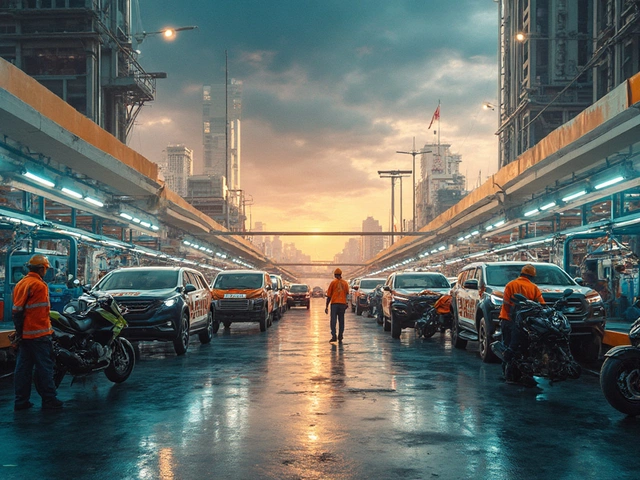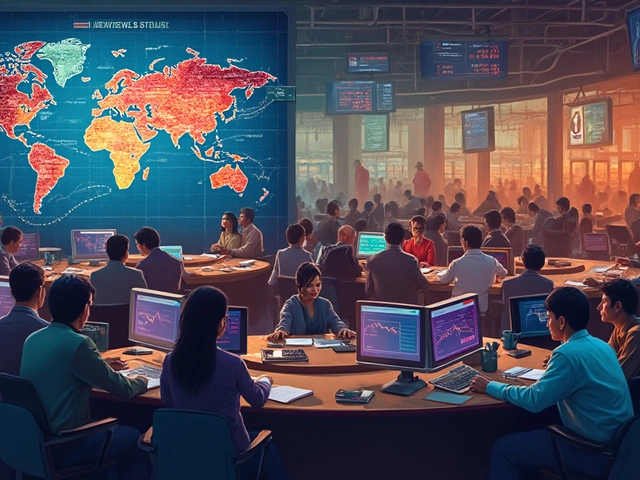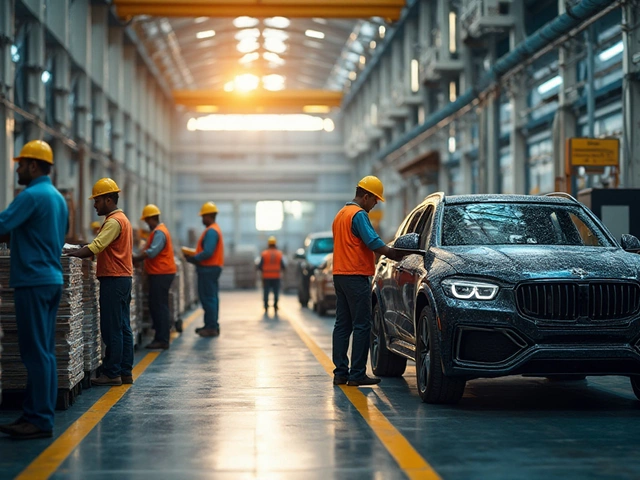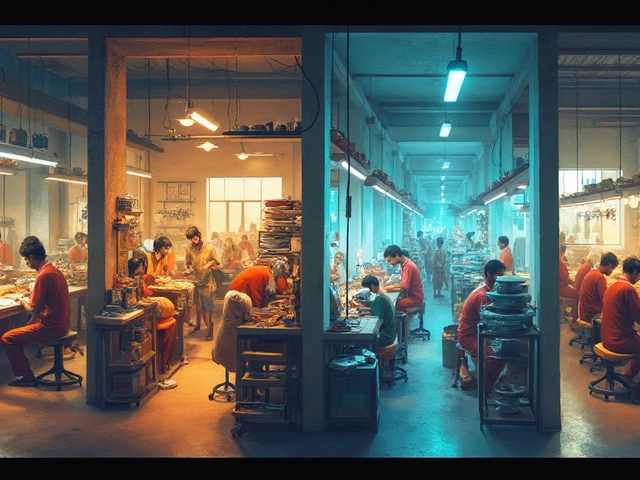Picture a sea turtle choking on a plastic bag, or beaches buried under a blanket of bottles. Not so long ago, the idea that plastic could take over our oceans was laughable. Now, it feels way too close for comfort. The world dumps around 8 million tons of plastic into the ocean every single year—enough to fill a garbage truck every single minute. Here’s the kicker: most of this mess comes from a handful of countries. Let’s get into the ugly truth: which country puts the most plastic in the ocean, and how do the numbers stack up?
The Country Topping the Ocean Plastic Charts
Ready for a shock? It’s not the country you might expect—like the United States or a European nation. It's China. China is the biggest source of plastic waste entering the ocean. According to the most cited study in recent years (published by Jambeck et al. in Science, and still referenced by the World Bank and the United Nations as of 2025), China alone was responsible for 2.4 million tons of plastic waste entering our oceans every year. That’s almost a quarter of the global total.
It gets even more interesting when you look at the reasons why. China has a massive population, rapid industrialization, and large coastal cities. About 60% of its cities are close to the coast, which means trash sometimes gets swept out to sea, especially during heavy rains and typhoons.
But China’s not alone. Here's a table of the top 10 plastic-polluting nations, based on credible 2023-2024 marine pollution data:
| Rank | Country | Annual Plastic Waste into Ocean (tons) |
|---|---|---|
| 1 | China | 2,400,000 |
| 2 | Indonesia | 1,290,000 |
| 3 | Philippines | 750,000 |
| 4 | Vietnam | 730,000 |
| 5 | Sri Lanka | 640,000 |
| 6 | Thailand | 430,000 |
| 7 | Egypt | 330,000 |
| 8 | Malaysia | 320,000 |
| 9 | Nigeria | 250,000 |
| 10 | Bangladesh | 170,000 |
It’s easy to point fingers at Asia, but the story’s more complicated. These countries do consume and manufacture tons of plastic, but a lot of the plastic they “dump” isn’t just theirs—huge amounts come shipped from Western countries to be ‘recycled,’ but end up in landfill near rivers or the shoreline instead. This means the plastic pollution crisis is a team effort—driven by the whole world, not just a few places. The truth? Rich countries have a habit of shipping their hard-to-recycle trash overseas and are part of why the numbers are so lopsided.
So why can’t these places keep a lid on their plastic? It’s pretty simple: lack of waste management. In places where trash collection is patchy or underfunded, plastic blows away, gets dumped, or just isn’t picked up at all. Indonesia has more than 17,000 islands—try organizing waste pickup for all of them. The Philippines, another top source, is sliced up into hundreds of islands, which makes building working waste infrastructure a nightmare. There’s just not enough collection, there aren’t enough recycling centers, and single-use plastic is everywhere because it’s cheap and convenient.
These countries are booming economically, but their systems haven’t caught up. As people buy more stuff, more packaging comes with it, and more trash floats out to the sea. Also, severe weather—especially flooding—pushes mismanaged garbage straight from cities to rivers, then out to the coast.
Still, things are starting to change. China shut its doors to foreign waste in 2018, which forced countries like the U.S., UK, and Australia to rethink how they deal with plastic trash. Asian governments are starting to push for alternatives to plastic and invest in cleanup schemes, but it takes time to roll out solutions across huge, crowded cities.
If you’re stunned, don’t feel powerless—there’s real momentum building for change. More on that soon. First, let’s talk about how exactly all this plastic ends up at sea.
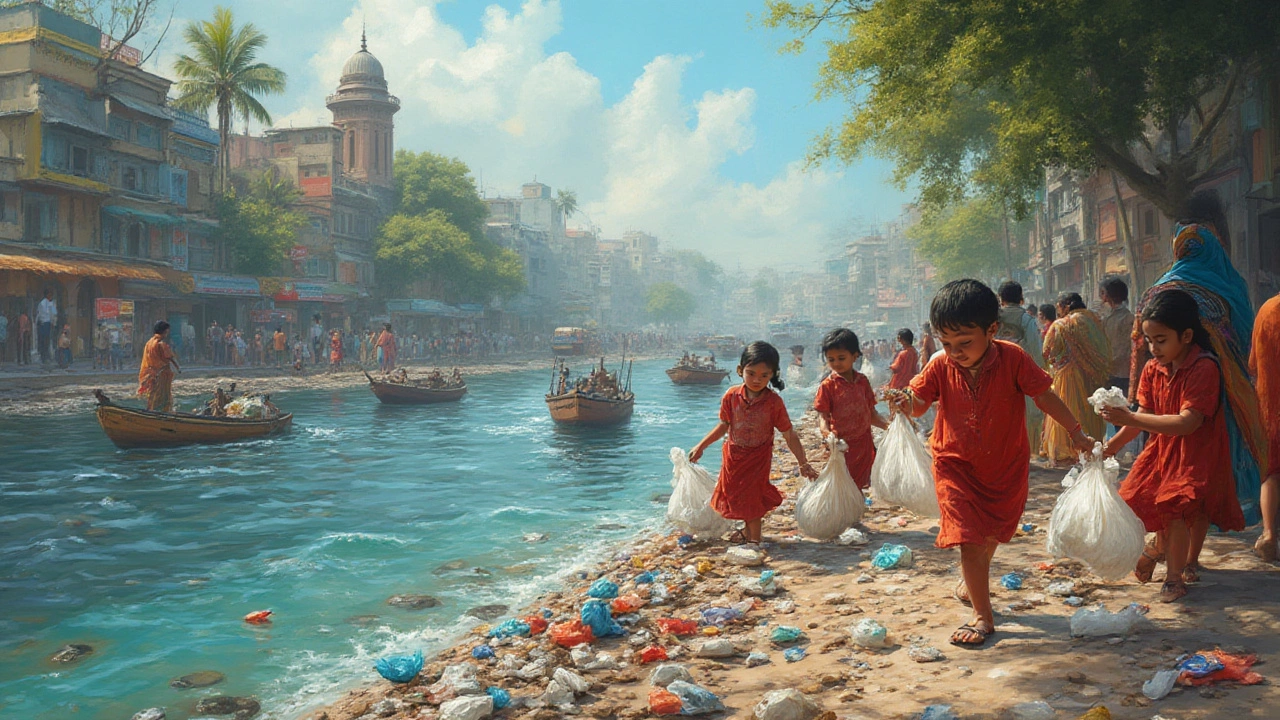
The Journey from Land to Ocean: How Plastic Gets There
So when we talk about millions of tons going “into the ocean,” how does it actually happen? It’s not like someone backs up a dump truck and tips it off the pier. It happens in a bunch of sneaky, roundabout ways, and the details are pretty eye-opening.
Here’s the biggest culprit: rivers. Some plastic just blows into the sea from beaches, but most travels down rivers. Researchers found that only 10 rivers—including the Yangtze, Ganges, Mekong, and Nile—carry more than 90% of all plastic dumped in the ocean. These waterways cut through crowded cities, poor neighborhoods, and industrial centers. It’s almost impossible to stop the onslaught where waste collection is weak and rivers act like conveyor belts for trash.
Some plastic breaks up into small pieces (microplastics) long before it leaves land. Tires, synthetic clothing, and personal care products like exfoliating face scrubs all shed invisible plastic that washes into storm drains, then to the sea. But macroplastics—bags, bottles, wrappers—are the big, visible problem. Once rivers flush this junk out to the sea, currents help it travel vast distances. There are now five huge “garbage patches” swirling in our oceans, with the Great Pacific Garbage Patch being the most infamous. This floating trash vortex is mostly made up of minuscule plastic bits and lost fishing gear, not home appliances or car bumpers.
Heavy rainfall, storms, and typhoons make matters worse. Flooding can pick up everything tossed in a gutter, sweep it through the city, and dump it right onto the coast. Coastal cities are particularly vulnerable—when there’s not enough money for bins, street sweepers, or proper landfills, plastic ends up everywhere. Pretty soon, the local river looks like a moving trash barge, and the ocean is just downstream.
Another less obvious pathway? The fishing industry. Lost or discarded nets (called “ghost nets”) and gear account for a surprising chunk of plastic debris. These float through the ocean for years, trapping and killing sea creatures. Globally, almost 10% of the plastic in the sea now comes from this sort of fishing-related waste.
Here’s something most people miss: beaches that look clean at sunrise are often the result of overnight beachcombing teams. In hot tourist spots, trash gets swept up before visitors wake up, hiding the scale of the problem. The real disaster sits underwater or at sea—out of sight, out of mind, until it washes up after a big storm.
And then there’s the plastic shipped for recycling, which often ends up as pollution. For years, Western countries sent their low-grade plastics to Southeast Asia. Most wasn’t recycled and instead got dumped or burned, poisoning local water and sending microplastics into rivers and food supplies. As of 2022, countries like Malaysia, Vietnam, and Indonesia started turning back plastic shipments, refusing to be “the world’s dump.” Still, the legacy of this trade means plastic trash lingers on beaches and in waterways.
Here’s a hard truth: you can’t solve this with beach cleanups, not alone. They help, but without dealing with the rivers and the source countries’ broken waste systems, plastic will keep coming like clockwork. Real change means cutting out plastics before they hit the streets in the first place.
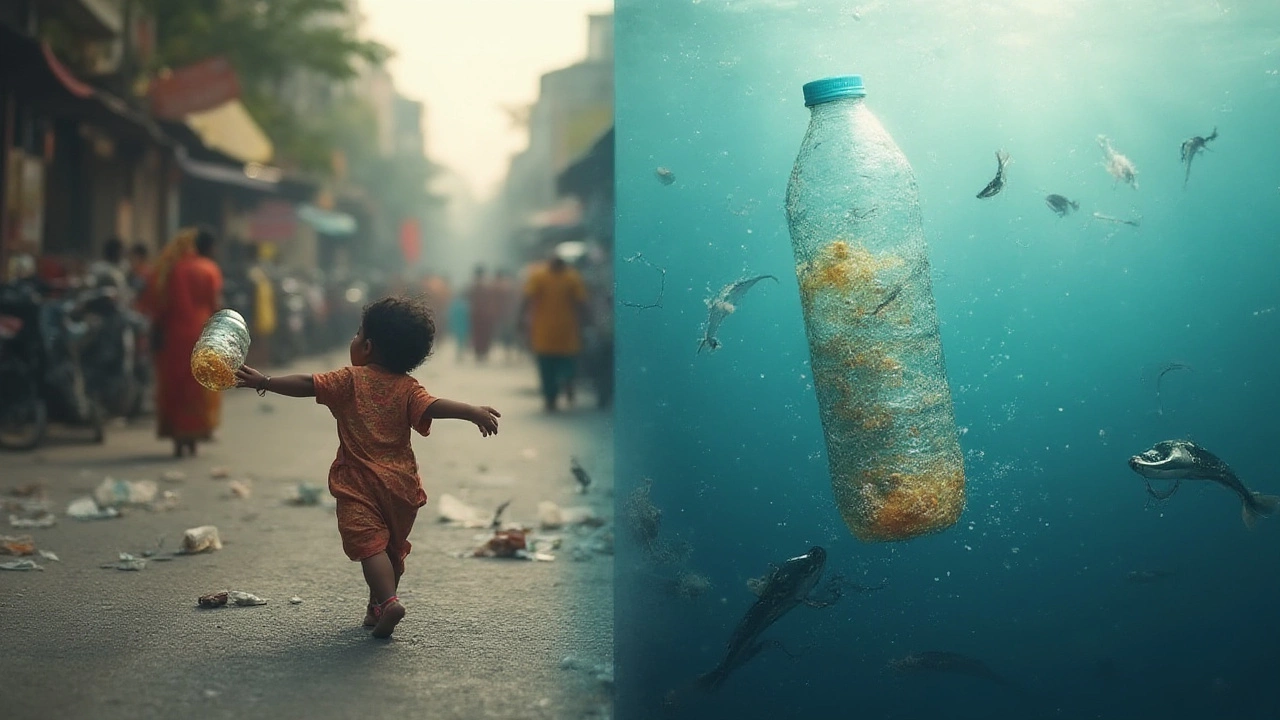
What Can Be Done? Tackling Plastic Pollution Worldwide
It’s easy to feel helpless, scrolling through photos of tangled ocean plastic or reading about sea life dying off. But fighting back doesn’t mean going zero-waste overnight or never using plastic again. The solution is a mix—something between big policies, smarter manufacturing, community action, and daily habit shifts.
Let’s start with government moves. China and Indonesia are pioneering bans on thin plastic bags and single-use straws in big cities. The Philippines has started taxing unrecyclable packaging, while Vietnam announced strict new rules for manufacturers, making them responsible for packaging waste collection. In 2023, Indonesia even invested in a massive river barrier system—the “Interceptor”—which skims floating plastic out before it heads to the sea, pulling out truckloads each day in rivers like the Citarum.
The next big push? Extended Producer Responsibility (EPR) laws. These force companies to pay for collection and recycling of the plastics they sell. In practice, EPR programs are already making companies change their packaging strategies—lighter bottles, more cardboard, easier-to-recycle plastics. Major corporations are ramping up use of recycled content, and countries like South Korea and Japan have hit recycling rates above 80% thanks to these strict laws.
Meanwhile, innovation is catching up. Biodegradable plastics made from plants and seaweed are starting to take off, and new enzymes can break down hard-to-recycle plastics in weeks. In 2024, a Filipino startup created edible wrappers for street food—safe for people and completely gone if they hit the gutter. Cheap plastic alternatives are on the rise, from reusable cloth bags to fiber-based cutlery, and you’ll find big chains ditching foam and switching to compostable packaging.
But what about you? Here are a few steps everyday folks can take that actually matter:
- Think before you buy: If it’s wrapped in three layers of plastic, look for another brand or buy in bulk.
- Use refill stations: Tons of local stores now let you refill shampoos, soaps, and lots more—no new bottle needed.
- Skip the bag, bottle, straw, or cup when you don’t need it. Bring your own stuff or go without. Small, but it adds up.
- Get loud: Push your city, school, or company to cut out single-use plastics or install more bins. Local pressure works.
- Join river and beach cleanups—they matter, especially if your city sits near key rivers that pollute the ocean the most.
If you’re running a business, join the movement on the manufacturing side. Switch to recycled or plant-based packaging, and ditch hard-to-recycle plastics where possible. Remember, laws are changing fast—getting ahead pays off. For the big fish in plastic manufacturing, designing products to be recycled—rather than tossed—will soon be standard practice, not just a trend.
Sometimes small inventions change the game. A 2024 study showed that cheap river barriers (think booms and nets) cut downstream plastic by 60% in their first year in cities like Ho Chi Minh and Jakarta. In India, shops swapping single-use bags for jute and cloth saw plastic litter halves in their neighborhoods. That’s fast, visible progress.
And here’s something inspiring: the world is actually using less of some types of throwaway plastics today than a decade ago, as more cities—and big brands—move to ban or phase them out. People are waking up. Each time you pick up a wrapper at the beach or say ‘no, thanks’ to a bag, it matters, because change adds up fast when enough people do it.
Sure, millions of tons still hit the water every year. But with smarter manufacturing, better policies, and people pushing back at every level, the tide is slowly turning. And it started with knowing who’s really putting plastic in the ocean and how we can all do something about it, wherever we live or work. The next time you see a plastic bottle on the sand, remember—it might have come a lot further than you think. But you can help stop the journey right now.

![Which Country Dumps the Most Plastic in the Ocean? [Data & Facts for 2025]](/uploads/2025/07/which-country-dumps-the-most-plastic-in-the-ocean-data-facts-for.webp)
